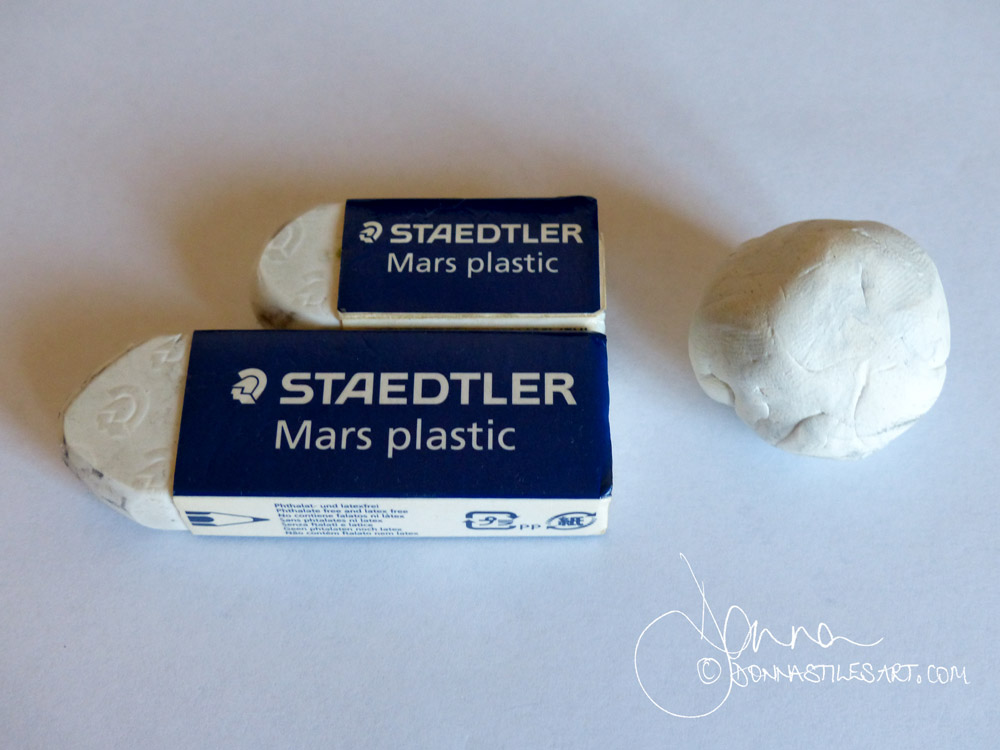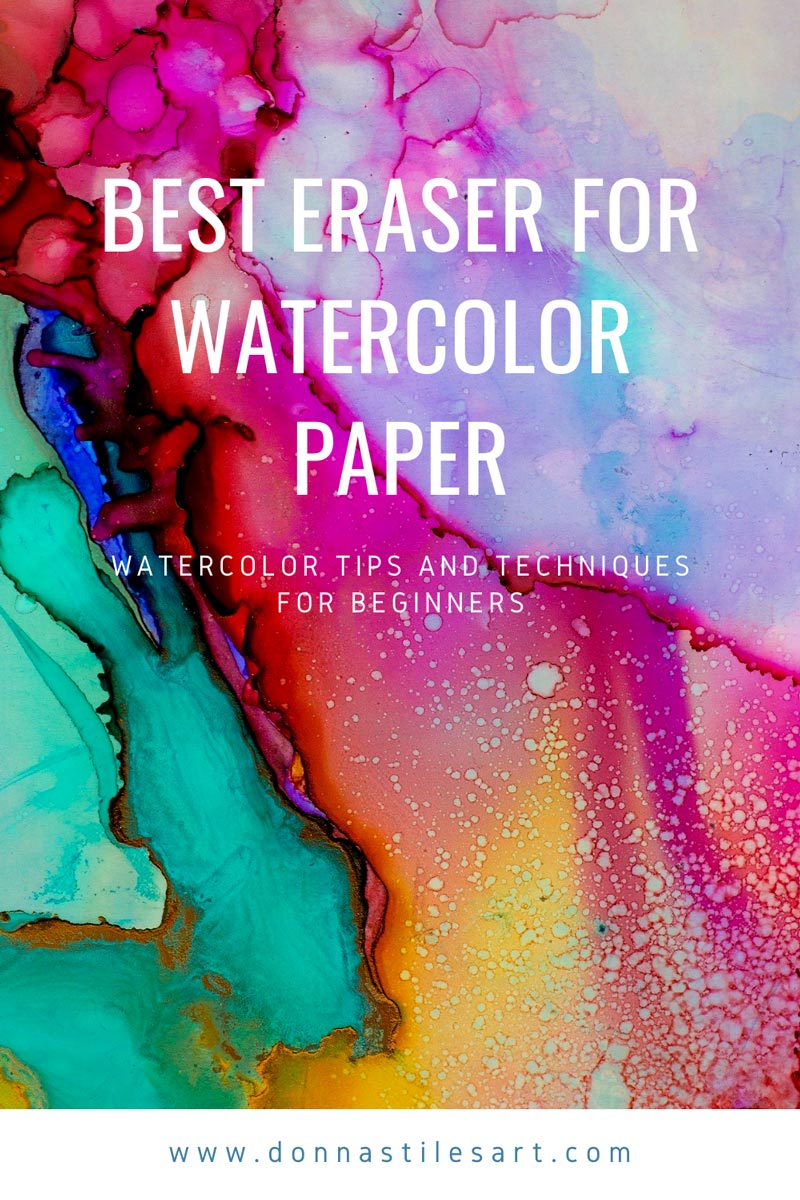- Home ›
- Watercolour tips for beginners ›
- Best eraser for watercolor paper
The best eraser for watercolor paper
- you need two
There isn't just one best eraser for watercolor paper, there are two. You'll need both for erasing before you paint in watercolor. And one for erasing your drawing after you have painted. If you really have to, and I have some advice on that too!
Luckily both erasers are very inexpensive to buy.
Erasing before painting
There are days aren't there, when a drawing happens almost seamlessly and with just a few adjustments it's ready to be painted.
And there are days when, even drawing the same subject that you have drawn many times before, it doesn't. And you have to draw and re-draw, erase and re-erase. Mostly this seems to happen to me when I have it in my head that I must really produce a masterpiece! On the days that I am simply playing, both the drawing and the painting turn out way better than I had ever invisaged. There's a lesson in there somewhere!
Anyway, on those days, after the second drawing attempt, if you want to paint it in watercolor. Stop. Turn the paper over and start afresh.
Because the repeated erasing will have damaged the surface of your watercolor paper, even if you have been careful. And the pencil line impressions even when the graphite has gone, especially if you like using a hard pencil like me - an H or HB - will show through your painting. Especially if it is smooth press paper and you are planning on painting only one or two light washes.
The overriding rule for watercolor paper is the least rubbing out you can do the better. So, if you don't have to erase it, don't!
The best eraser for watercolor paper
The best erasers for watercolor paper are these and you are going to need both of them. Good thing is that both are inexpensive.

The product links in this page are "affiliate links". If you click on them and make a purchase, I may earn a small commission at no cost to you. I only recommend products that I use myself and have no doubt that you will love too. More information can be found in my disclosure policy.
A plastic eraser - Staedtler Mars Plastic
The first is best for erasing long lines and large areas of a drawing. And, when it is new with it's fine corner points in tact, it will accurately remove tiny details without touching any surrounding lines or marks.
Staedtler Mars Plastic eraser.
When the eraser gets dirty, clean it before using it on your watercolor paper. Rub it repeatedly on a clean sheet of paper to remove the graphite residue. That way the residue won't be end up as a smudge on your paper. Smudges are harder to remove than drawn lines.
A soft putty eraser
The second is for when those points are gone. Because it can be moulded it into the finest of soft points to take out details. It's a putty eraser, importantly a soft one.
But it also comes into its own for two other reasons.
The first. By gently pressing a portion onto a pencil line you can fade it to as light as you want, until in the end it is completely gone. It's not an all or nothing eraser.
Always knead your putty eraser before you first use it: this will incorporate the tiny amount of oil that it contains that may be sitting on its brand new surface in its wrapper.
And. If you trace your drawing onto your watercolor paper with this method, then you are bound to leave traces of pencil lead where your hands/fingers have pressed onto the top sheet of paper as you traced the drawing with your pen/pencil onto the watercolor paper.
The putty eraser, gently rolled or pressed onto the watercolor paper will lift all of those pencil residues. Giving you a clean white brilliance back again.
The first eraser will do the same of course, but good as it is, there is much more of a risk of you damaging the fibres in the top layer of the paper. And it leaves behind little dark rolls of eraser that need brushing off the paper.
Not all putty erasers do the job
Not all putty erasers are alike - my recommendation is either Faber-Castel Kneadable Art Eraser.
Or, the LYRA Kneadable Eraser.
Those eraser crumbs
Do not use your hand to brush them away. You should always avoid whenever you can touching the surface of watercolor paper; not only because you risk transferring dirt onto the paper, but because even clean hands they will leave a fine residue of grease behind on its surface.
First shake the paper: most crumbs will fall off. Then use a flat acrylic or bristle brush to sweep the eraser remains off the paper.
Remember to shake them off the brush before you use it to paint or you will end up with horrible little black bits on your wet painting, and be left wondering where on earth they have come from all of a sudden... I know!
The putty eraser doesn't leave bits on your paper, it absorbs all the pencil lead. So, over time, it will change color and darken. Remember to regularly fold the portion you have used into the eraser so that it doesn't deposit some of the graphite it has picked up back onto the paper.
NOTE. Just as it is good at absorbing pencil lead, it is too at incorporating within it any dust/grit on its surface. So to avoid that happening keep the putty eraser in a small sealed plastic container - this one comes with its own.
When to use them both together
If you want to erase a part of your drawing that has lots of lines and/or has been shaded in pencil. First use the putty eraser to lift the majority of graphite and then the plastic eraser to give you a clean finish.
NEVER use these erasers on watercolor paper
End of a pencil erasers. The rubber is so small that before you know it, even if it is a good quality pencil, its metal surround will be scratching your paper. Most do not lift graphite well, and they leave a lot of crumbs to have to take care of.
Erasing your pencil drawing after you have painted in watercolor
Depending upon how many layers of watercolor paint you have applied, you can sometimes, to a degree, erase the underlying pencil lines of your drawing. Removing pencil lines under washes of staining pigments is much harder than under non-staining ones.
A lot of the time, impossible.
You are going to need the plastic eraser. Putty erasers just won't do this job.
BUT.
I WOULD'NT!
For two reasons.
The first is that you will need to apply more pressure and go back and forth a few times to erase those lines. On a good quality watercolor paper, with care and in small areas at a time, it can be done without damaging the surface. But there is the risk that it will.
And. Careful as you may be, some of the surrounding color will be removed as well. On a pale light wash it won't be as noticeable. But on a darker wash, or of several layers, it will. You only have to look at the color of the eraser crumbs to see what has been removed.
The second is that if you attempt to erase a pencil line close to an area that has been painted with a thick consistency of watercolor pigment - such as the final darkest darks of your painting when you are painting wet onto dry and with a near pure pigment buttery consistency - I'm thinking of the final touches to the pupil of an eye in a watercolor portrait painting - then you are at serious risk of the eraser/rubber actually lifting and smudging that pigment over the area that you are working on. Even if the paint is 100% dry.
It's happened to me. The deep dark paint in a pupil smudged onto the speck of reflected white light I had so carefully preserved in the eye and that brilliance of contrasts was gone in a second. Even after careful dampening and lifting of the smudged area, it is never the same.
You can imagine the, "Oh why, oh why did I do it?" I said out loud that day. Just to remove a tiny pencil line that no one else would have noticed.
Another reason to leave your drawing there is that, for me, it constitutes just as beautiful a part of your finished painting as the watercolor layers.
And, as much as you may see them glaring back at you, the rest of us won't. Even if you go as far as pointing them out to us! We will see the whole beautiful thing you have created.
Erasing pencil lines that haven't been painted over
Pencil lines that haven't been painted over can be erased by either the plastic eraser or the putty eraser. For fine details, especially in your focal point area - such as that eye I told you about - I would always opt for dabbing gently with the putty eraser versus rubbing with the plastic eraser. Much less risk of moving surrounding pigment.
